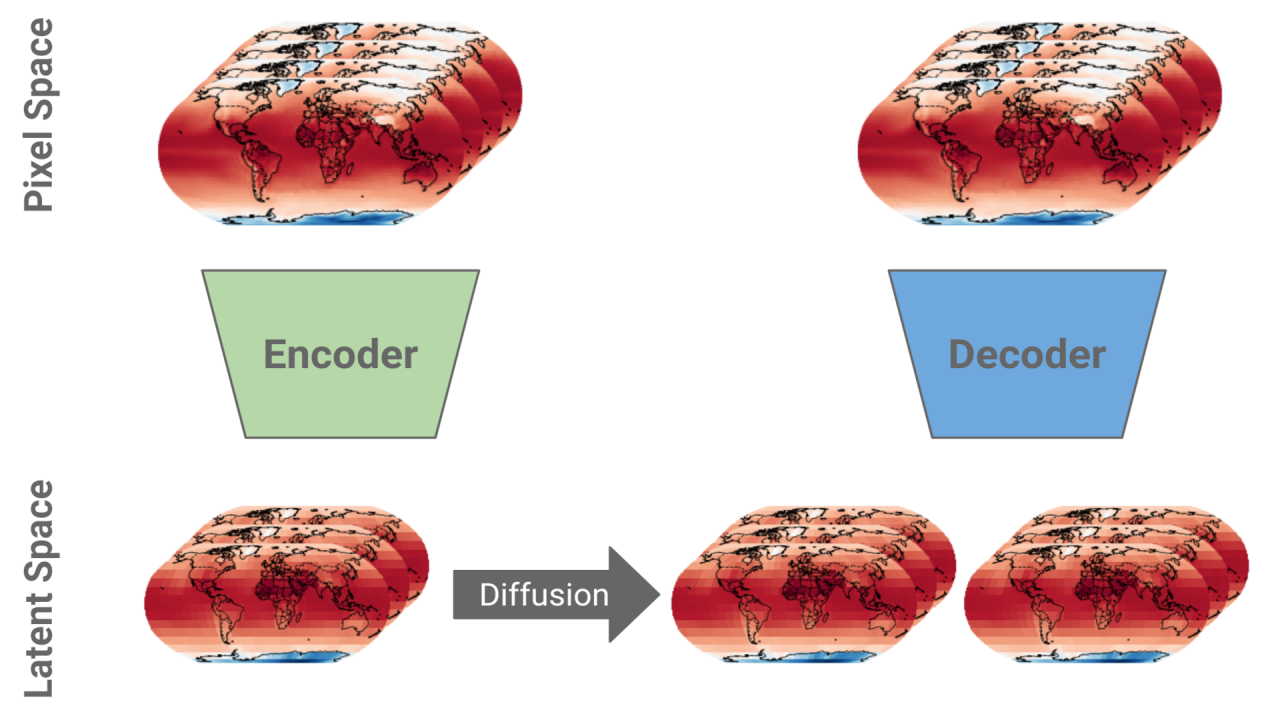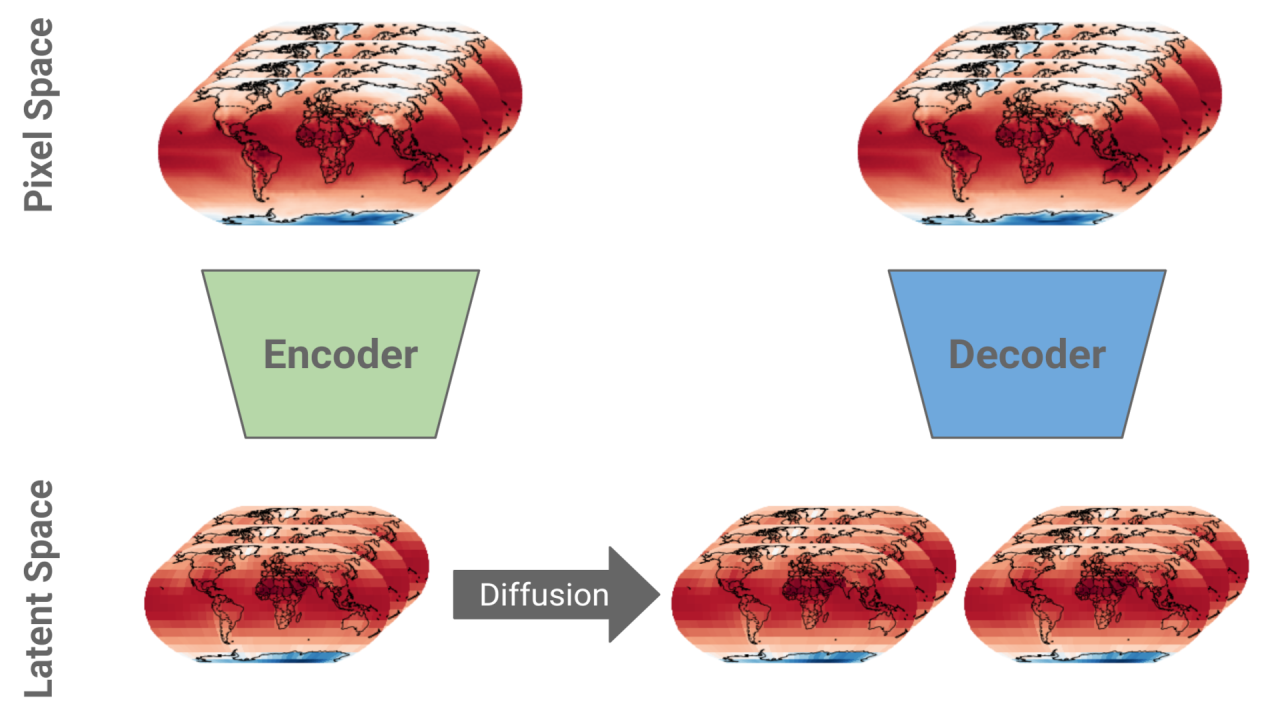

Auto-Regressive Generative Deep Learning Approach Towards Creating High-Resolution Climate Simulations
Monday, May 13, 2024 3:00 PM to Wednesday, May 15, 2024 4:00 PM · 2 days 1 hr. (Europe/Berlin)
Foyer D-G - 2nd floor
Research Poster
AI Applications powered by HPC TechnologiesDigital Twins and MLEarth, Climate and Weather Modeling
Information
Poster is on display and will be presented at the poster pitch session.
Numerical climate models are computer-based tools for simulating the Earth's climate system. They use mathematical equations to represent the physical, chemical and biological processes that take place in the atmosphere, oceans, land surfaces and ice cover. However, it is impossible to simulate the Earth's climate system perfectly because of insufficient knowledge of these processes or uncertainty about current climate states. By generating several simulations with small variations in input parameters, model configurations and/or forcings, it is possible to explore the range of possible climate scenarios and estimate the uncertainties associated with these projections. These are then used in a variety of applications, such as climate impact assessment and policy-making. However, generating high-resolution climate simulations using these models requires significant computational resources, storage and time, which can be particularly critical in the context of risk assessment and decision-making. Our research addresses this challenge by applying state-of-the-art machine learning techniques to generate high-resolution climate simulations. The process consists of two steps. The first step trains a variational auto-encoder to map the high-dimensional climate data into a low-dimensional latent space. The second step trains a probabilistic diffusion model to create a realistic distribution of uncertainty. We evaluate our approach on global temperature grids of historical simulations from the Max-Planck-Institute's Earth System Model. The results show good reconstructions of the ensemble spread and mean as well as of selected climate phenomena. For future investigations, we will focus on the consideration of other climate variables, forcings and simulations to extend and improve the results.
Numerical climate models are computer-based tools for simulating the Earth's climate system. They use mathematical equations to represent the physical, chemical and biological processes that take place in the atmosphere, oceans, land surfaces and ice cover. However, it is impossible to simulate the Earth's climate system perfectly because of insufficient knowledge of these processes or uncertainty about current climate states. By generating several simulations with small variations in input parameters, model configurations and/or forcings, it is possible to explore the range of possible climate scenarios and estimate the uncertainties associated with these projections. These are then used in a variety of applications, such as climate impact assessment and policy-making. However, generating high-resolution climate simulations using these models requires significant computational resources, storage and time, which can be particularly critical in the context of risk assessment and decision-making. Our research addresses this challenge by applying state-of-the-art machine learning techniques to generate high-resolution climate simulations. The process consists of two steps. The first step trains a variational auto-encoder to map the high-dimensional climate data into a low-dimensional latent space. The second step trains a probabilistic diffusion model to create a realistic distribution of uncertainty. We evaluate our approach on global temperature grids of historical simulations from the Max-Planck-Institute's Earth System Model. The results show good reconstructions of the ensemble spread and mean as well as of selected climate phenomena. For future investigations, we will focus on the consideration of other climate variables, forcings and simulations to extend and improve the results.
Format
On-site
